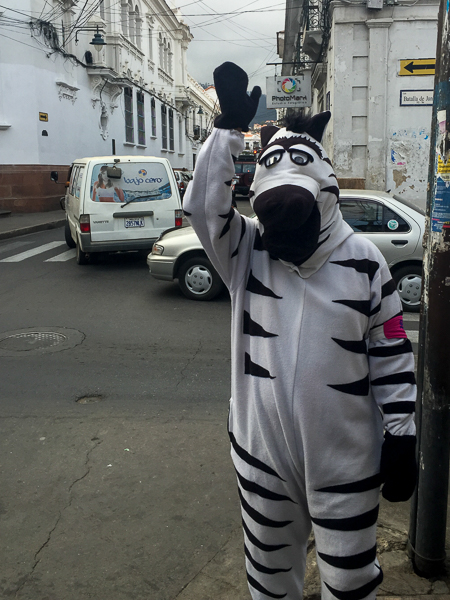
Bolivia
Bolivia is our favourite South American country. One of the highest countries on earth, visiting feels like stepping back in time. The altitude can literally take your breath away. As can the magnificent landscapes. Mountains, lakes, deserts, jungles and salt flats. There is something for every type of traveller.
Lake Titicaca, the continent’s largest lake, straddles the border with Peru. Lakeside Copacabana is a favourite resort for both tourists and locals alike.
Sat on the Andes' altiplano plateau at more than 3,640 metres above sea level, La Paz claims the highest administrative city in the world. Sucre, the official capital, comes second at 2,750 metres above sea level.*
But Bolivia's star attraction is the unworldly Salar de Uyuni. It is difficult to match the 10,582 squared kilometres (4,086 sq. miles) salt flats which are one of the flattest places on earth. So flat that it is traditional to take crazy perspective distorting pictures.
Fast Facts
- Known as the 'City of Four Names', Sucre is also called Charcas, La Plata and Chuquisaca. Founded in the 1500's by Spanish colonials, Sucre offers visitors a clear glimpse of life in aristocratic Spain in the 16th century. Sucre has many important historical buildings worth visiting, including La Casa de la Libertad, where Simón Bolívar wrote the Bolivian Constitution, and Bolivia’s National Library, which features documents dating to the 15th century.*
- Dinosaur fans will love the 5,055 footprints from at least 8 different species of dinosaurs on Cal Orko. The imposing vertical limestone slab is 1.5 km long and more than 100 metres high and was once a lake bed more than 68 million years ago.*
- Bolivians with bulging cheeks are chewing coca leaves to combat the effects of altitude. You can also get coca tea which we found helpful.
When to Go
For Bolivia it is all about the altitude which significantly affects temperatures. We spent a night freezing our socks off in arctic sleeping bags at -20°C (-4°F) on our salt flats road trip. Daytimes by contrast were scorching hot. Make sure you are well prepared with thermal layers.
The best time to go is May to October. Although this is winter it is cool and dry. The rainy season is the summer (November to April) when travel can be seriously disrupted by flooding and landslides so best avoided.
The Amazon is also pleasant during winter as the humidity and temperatures both drop (30°C / 86°F in the daytime, 12°C / 54°F at night). The lowland areas tend to be warmer and more humid.
February to April is festival time, including Carnival and Easter (Holy Week). It is advisable to book early if you are travelling at this time.
Our Posts
- Captivating landscapes and crazy perspective distorting photos in A Pinch of Salt Part Two: Road Tripping the Salar de Uyuni
- Three wonderful weeks in Sucre, learning Spanish, visiting local markets, joining the fiestas and staying with a 4 generation Bolivian family. Read more inGooooooool: Footprints, Football and Family Life in Sucre
- In Blame it on El Papa: Misadventures in La Paz things don't go according to plan in La Paz but chilled out Copacabana more than makes up for it.



